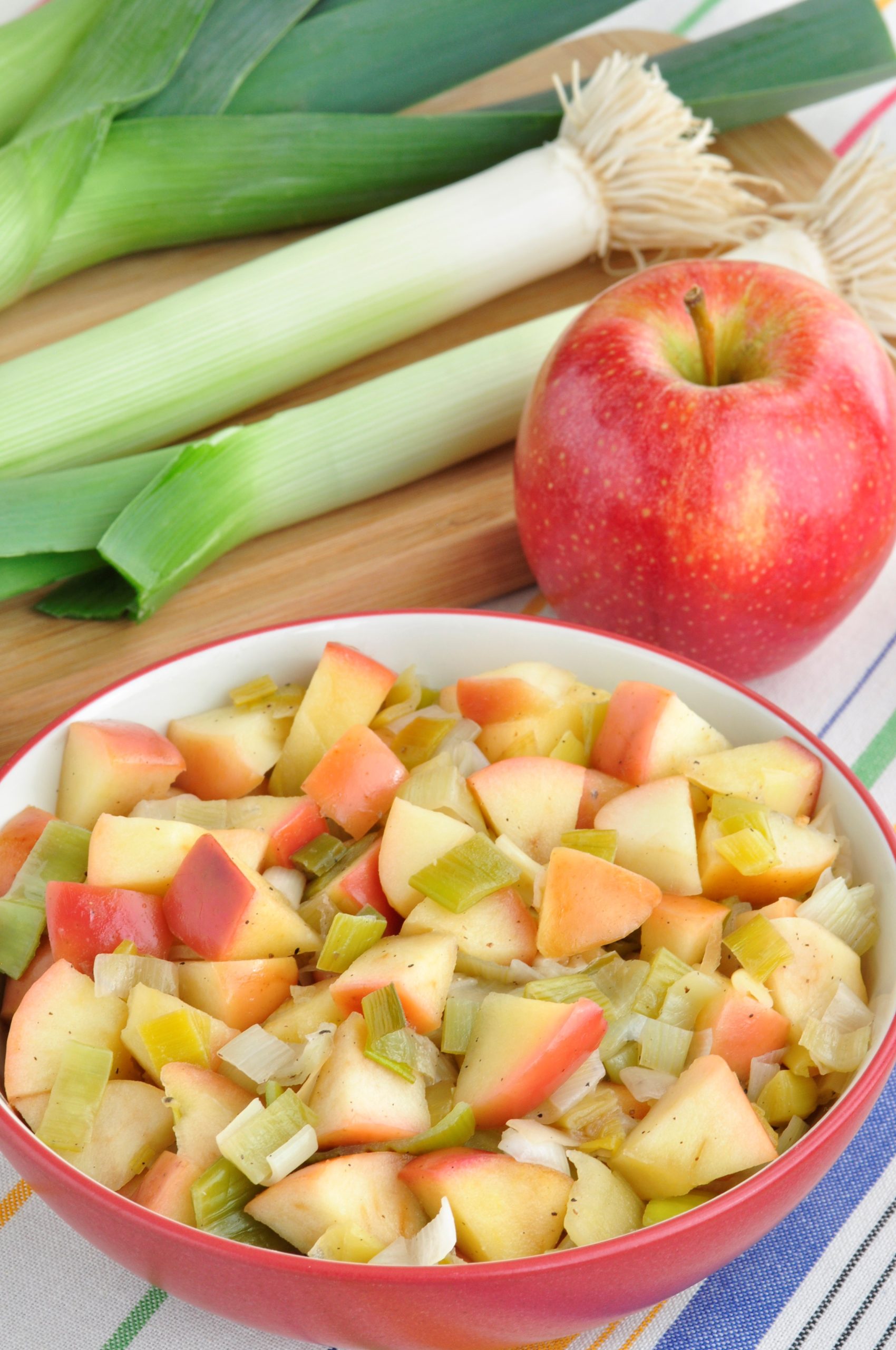
by Michelle | Jan 31, 2019 | Recipes
Sautéed Leeks and Apples
Recipe and Photo Source: FoodHero.org
Number of servings: 8
Time for preparation (including preparation and cooking): 20 min
Ingredients:
1 medium leek, chopped (about 3 cups)
2 teaspoons oil
2 medium apples, cored and chopped
1 Tablespoon honey
1 teaspoon vinegar
1⁄4 teaspoon each salt and pepper
Directions:
- Sauté leeks in oil in a medium skillet over medium heat, stirring occasionally, until the leeks are soft (about 5 minutes).
2. Add apples and continue cooking, stirring frequently, until apples begin to soften (about 3 minutes).
3. Remove from heat. Add honey, vinegar, salt and pepper. Stir gently to combine all ingredients. Serve warm.
4. Refrigerate leftovers within 2 hours.
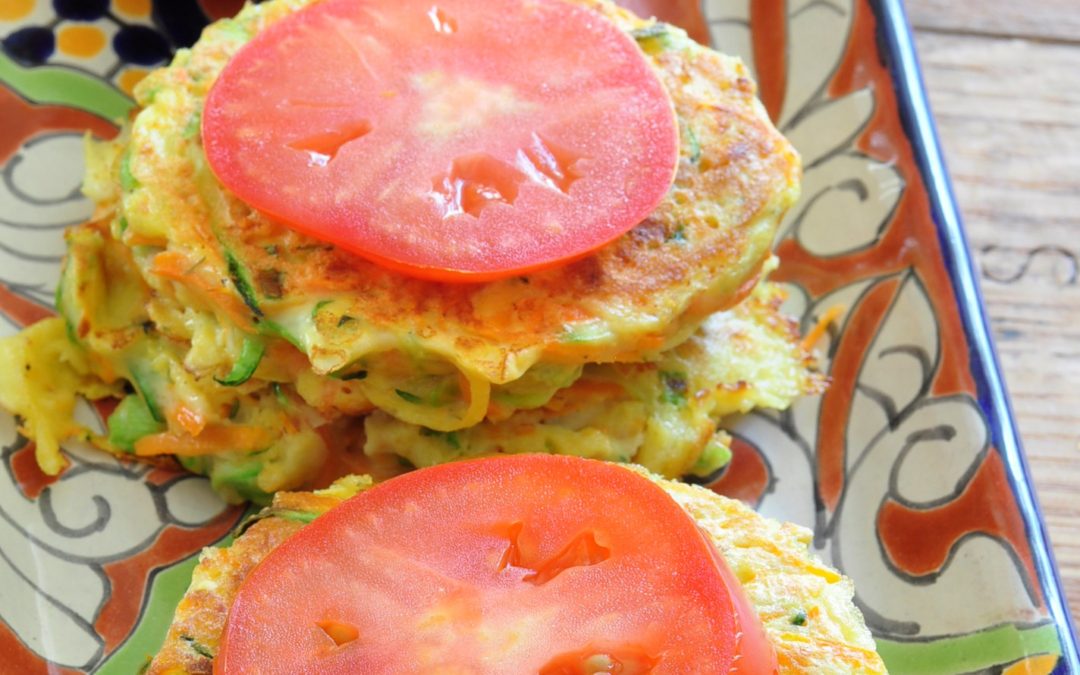
by Michelle | Jan 17, 2019 | Recipes
Garden Vegetable Cakes
Recipe and photo source: FoodHero.org
Number of servings: 4
Time for preparation (including preparation and cooking): 35 min
Ingredients:
1⁄4 cup grated Parmesan cheese
1⁄3 cup all purpose flour
1⁄2 teaspoon baking powder
1⁄4 teaspoon dill weed
1⁄4 teaspoon each salt and pepper
4 eggs (or 1 cup egg substitute)
2 Tablespoons minced green onion with tops
2 teaspoons lemon juice
1 clove garlic or 1/4 teaspoon garlic powder
1 1⁄2 cups shredded vegetables (unpeeled zucchini (drained and pressed), potato, carrots, bell pepper, celery, sweet potato or yam)
Directions:
- In medium bowl, stir together cheese, flour, baking powder, dill weed, salt and pepper.
- Beat in eggs, green onions, lemon juice and garlic until well blended. Stir all shredded vegetables into the batter.
- Heat skillet or griddle over medium-high heat (350 degrees in an electric skillet). Lightly spray or oil with cooking spray. For each vegetable cake, pour 1/3 cup batter onto hot skillet or griddle. Cook on both sides until golden brown. Serve warm.
- Refrigerate leftovers within 2 hours.
Notes
- Top with low-fat sour cream and tomato slices.
- Precook “harder” vegetables like carrots and potatoes, if desired.
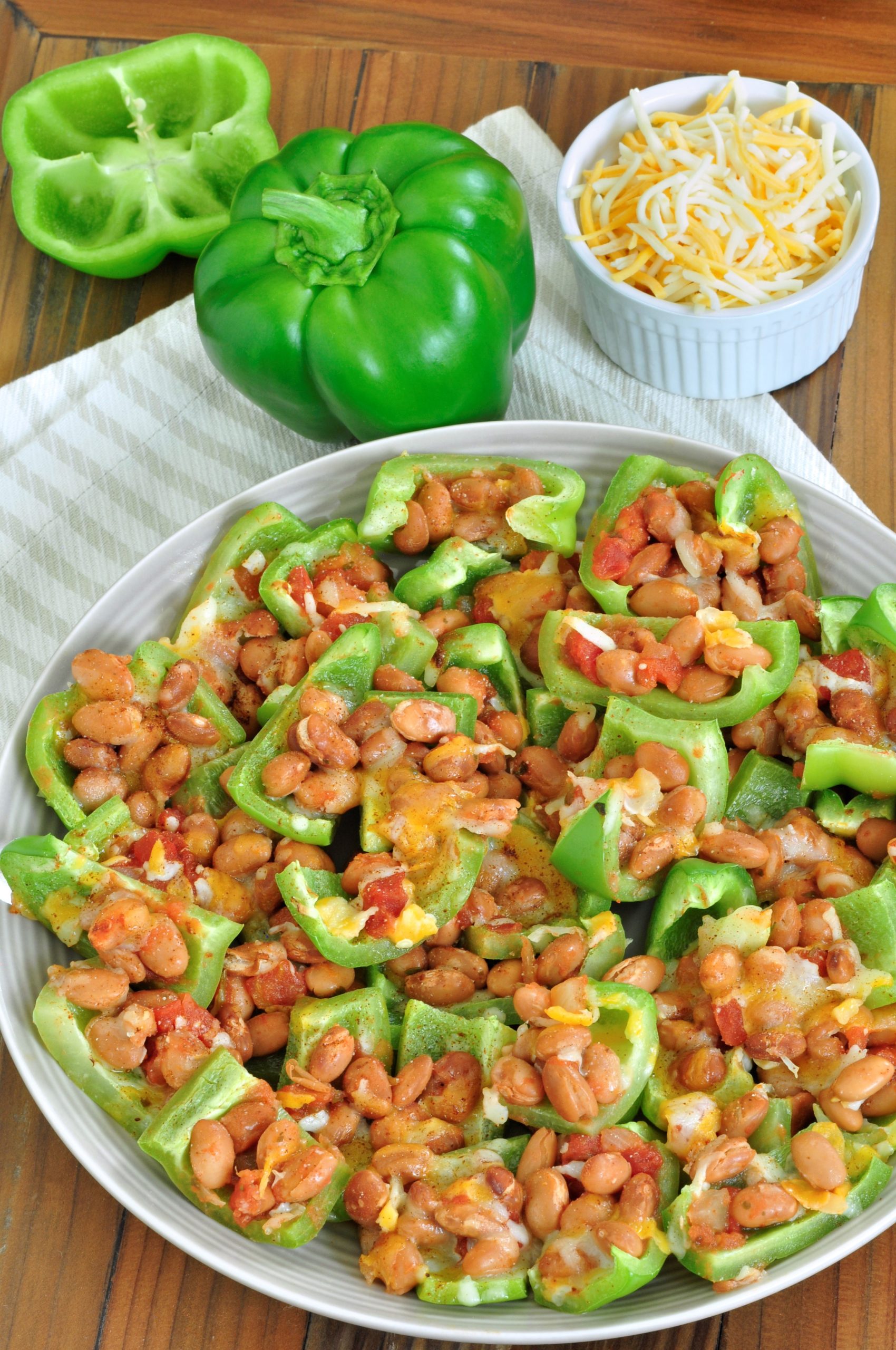
by Michelle | Jan 11, 2019 | Recipes
Bell Pepper Nachos
Recipe Source: Recipe and photo from www.FoodHero.org
Number of servings: 8
Time for preparation (including preparation and cooking): 20 min
Ingredients:
4 bell peppers
1 cup salsa
2 teaspoons seasoning (try a mixture-chili powder, garlic powder, ground cumin, pepper)
2 cups cooked meat (chopped or shredded), beans or tofu
1 cup reduced fat shredded cheese
Directions
- Preheat oven to 350 degrees.
- Wash bell peppers, remove seeds and cut into bite-sized pieces. Arrange pieces close together in a single layer on a large foil-lined baking sheet.
- In a medium bowl, combine salsa, seasonings and meat, beans or tofu. Spoon the mixture evenly over pepper pieces then top with cheese.
- Bake for 15 minutes, or until peppers are heated through and cheese is melted. Serve warm.
- Refrigerate leftovers within 2 hours.
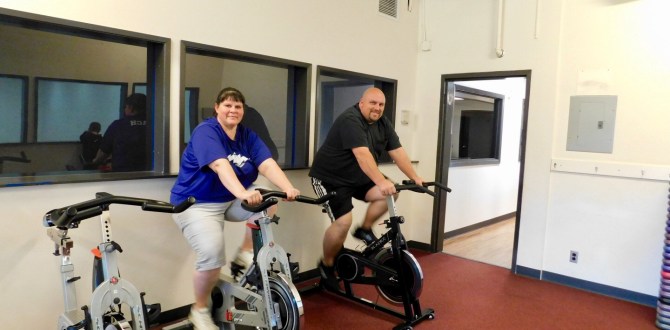
by Michelle | Jan 11, 2019 | Being Well
Tillamook couple makes positive health and lifestyle transformation with innovative program
By Patti Atkins, APR, Columbia Pacific CCO
TILLAMOOK, Ore. — When Mandie Phipps was diagnosed with pre-diabetes, she knew that she was going to have to make some significant changes to improve her health. But when her partner, Shawn Parker, decided to join her and include the whole family, they were able to transform their lives for the better.
Columbia Pacific’s Community Advisory Council in Tillamook County teamed up with local health care providers, OSU Extension and Tillamook Family YMCA to offer an evidence-based Diabetes Prevention Program that was developed by the Centers for Disease Control for members on Oregon Health Plan. The instructor was trained as a certified Community Health Worker through a partnership that was forged with OSU Extension.
Beginning with diagnosis, the yearlong pilot program encourages participants to learn more about diabetes, diet, exercise and healthy lifestyle changes. The participants can also join the YMCA for one-third of the cost, the other two thirds are covered by Columbia Pacific CCO and the YMCA.
“My health care provider at Tillamook Regional Medical Center gave me a prescription for the program,” said Phipps. “I realized that this was very serious and that I was going to need to make some significant changes to stay healthy.”
“I joined Mandie for moral support,” said Parker. “But in the first class we took a test where I learned that I was at high risk for pre-diabetes as well. We realized that we were going have to overhaul our entire lifestyle.”
“In the classes, we learned about how to evaluate healthy food choices,” Phipps continued. “We read labels, count calories and fat in everything we eat now. We began to practice good portion control. We have almost cut out all soda and drink water about 90 percent of the time. And we added walking as a family activity in the evenings instead of just hitting the couch and watching TV.”
“We used the activity trail at the middle school, next to our house, as a walking path after dinner to spend quality time together as a family. We focused on our diet first and lost most of our weight. Then we slowly added exercise. Since we started in April, Mandie is down 31 pounds and I’m down 40 pounds. And we are still losing weight, even when we take time off for vacations and holidays. Our children are in sports now as well. It’s helping the whole family be healthy.”
At the end of the first year, program collaborators will decide how to improve or continue this project. More information will be announced.
____________________________________________________________________________
About Columbia Pacific Coordinated Care Organization
Established in September 2012, Columbia Pacific CCO coordinates health services for more than 25,000 Oregon Health Plan members in Columbia, Clatsop and Tillamook counties. For more information, please visit www.colpachealth.org.
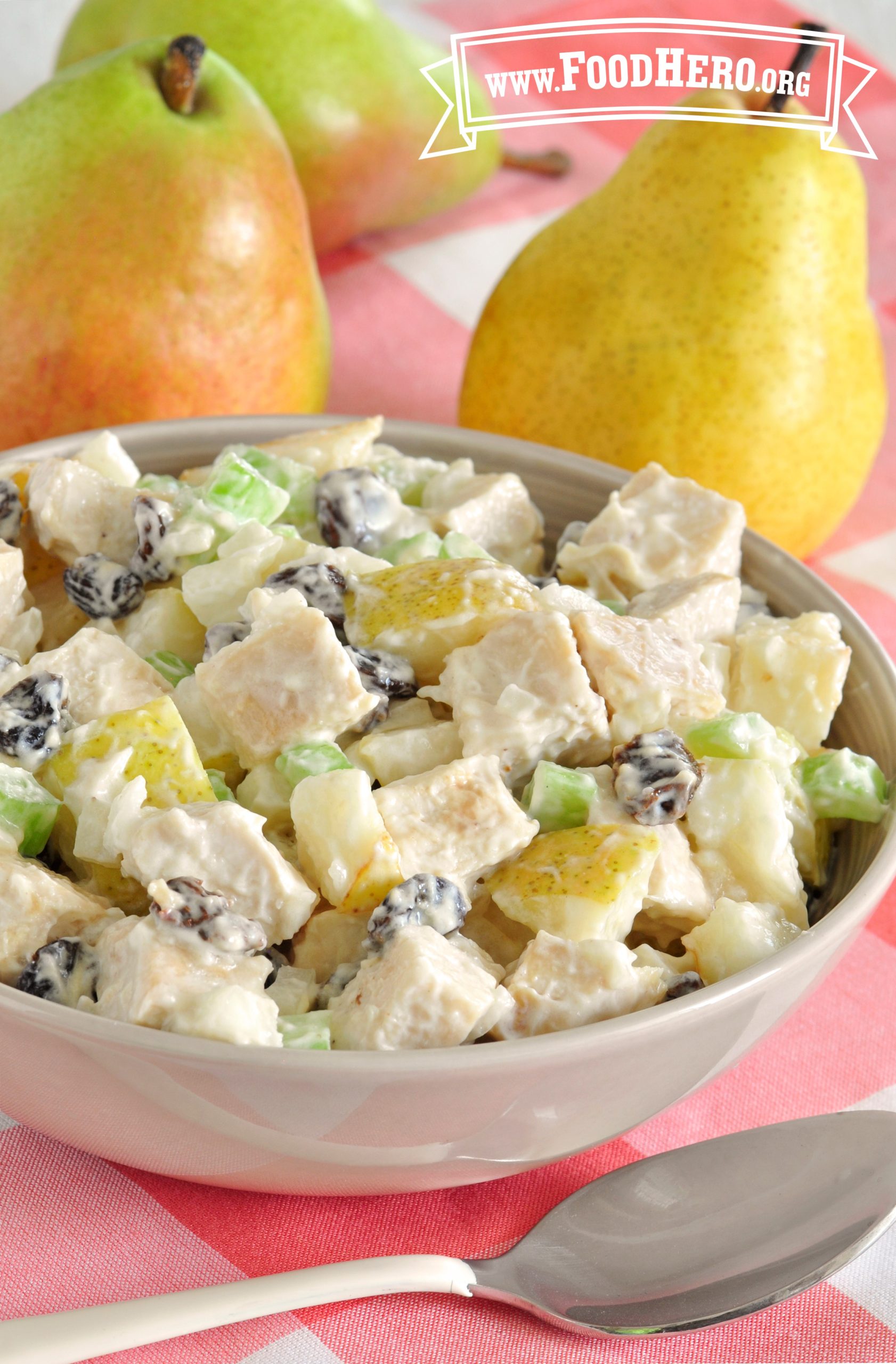
by Michelle | Jan 3, 2019 | Recipes
Chicken & Pear Salad
Recipe & Photo Source: FoodHero.org
Number of servings: 5
Time for preparation (including preparation and cooking): 15 min
Ingredients:
2 cups pears, diced (fresh or canned)
1⁄4 cup celery, chopped
1⁄2 cup onion, chopped (sweet onion will be most mild)
1⁄4 cup raisins
1 cup cooked chicken, diced
2 Tablespoons low-fat plain yogurt
2 Tablespoons mayonnaise
1⁄8 teaspoon salt
Dash of Pepper to taste
1 Tablespoon lemon juice
Directions:
- In a large bowl, combine all ingredients. Mix well. Serve now or chill.
- Refrigerate leftovers within 2 hours.





